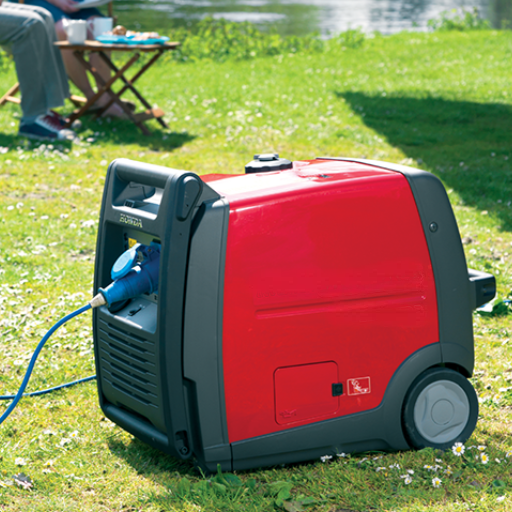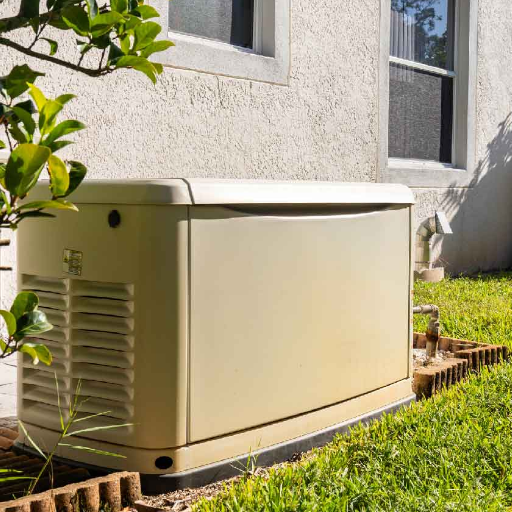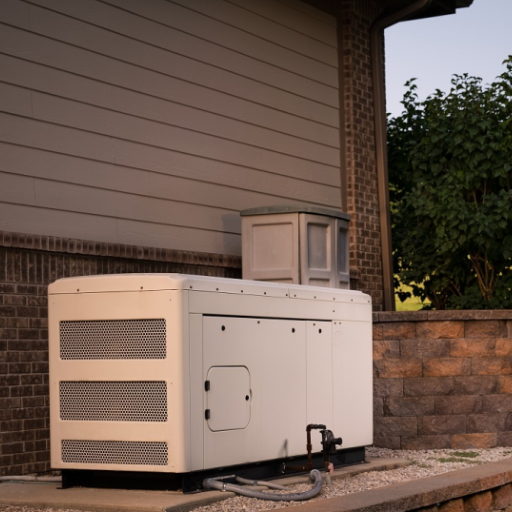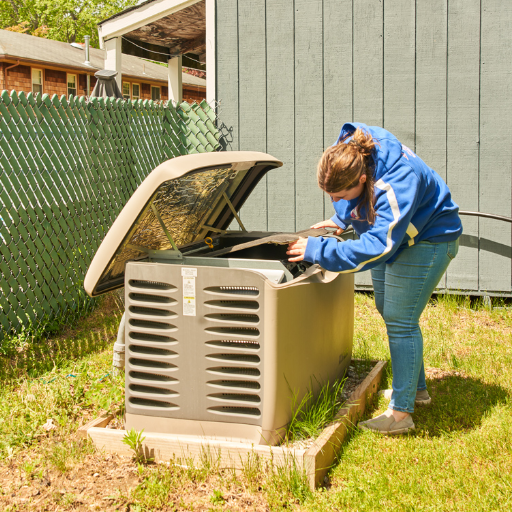It is essential to remember that having a backup power source is crucial in both domestic and business settings to maintain normal functioning of the house during power outages. You have at your disposal a manual that was created to help you understand the process of generator installation in detail, from planning to the final stage of setup. It doesn’t matter what your location is, whether you plan to install the generator for power outages, sea level rise, and other catastrophes, or just to have peace of mind. This piece of writing is informative, and you will be able to decide at any time. You will learn about some of the vital issues surrounding an inventory supply of electricity, including the Size of the generator, preparing the area, obtaining permits, safety laws in place, and possible installations by technicians or specialists. As far as this e-book is concerned, the goal of installing a standby generator, which is dictated by the energy required within the premises, would not pose any difficulty.
Introduction to Standby Generator
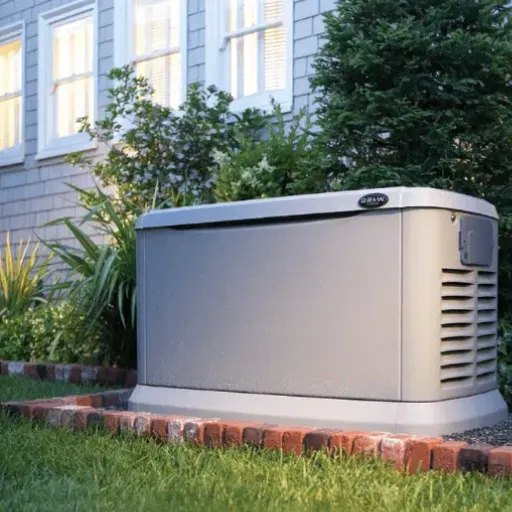
Standby Generators are designed to supply power during power shortages. These generators are a permanent install, unlike the portable types, and they are also configured with transfer switches in most cases, for automatic turn-on once the power is out. They use either natural gas, diesel, or propane fuels, which make them very practical and durable. Residential or business standby generators are usually also standby generator and are connected to the critical load circuits (you also cable the generator to them). That done, the frequency of hitches or even halts is considered to have been covered, and the go on of the activities, or rather the functions, can go on. These systems are incredibly advantageous in areas that frequently experience power outages, providing a certain level of assurance and enabling normal operation.
What is a Standby Generator?
Standby generators can be described as reliable power backup appliances designed to turn on and supply electricity in the absence of a mains supply. These systems feature an automatic transfer switch (ATS) that can detect when the primary power sources have failed and then immediately activate the generator. The main components are the internal combustion engine, the alternator, and the control system. The internal combustion engine is powered by gases such as petrol, natural gas, or diesel, which in turn helps the alternator to generate electricity from the mechanical energy. Today’s standby generators are designed to save time and energy, equipped with virtual supervision and updated condition monitoring for faster operation. Most of the types can provide electric power to key circuits or even multiple houses as long as the size and wattage of the system is appropriate. This, together with their perfect operation, has enabled them to become a significant part in promoting the sustainable use of energy in domestic and business premises.
Why Invest in a Standby Generator?
To address such an issue affecting the region, another solution exists i.e. the use of standby generators. A standby generator is an invaluable resource for individuals, companies, or institutions that have experienced prolonged power outages. These include, but are not limited to, safety, production, and convenience. In the United States, power cuts are frequently reported by consumers, with recent cases illustrating that people endure more than eight hours of no power in a year. The primary concern of most standby generator buyers is largely alleviated by automatic switching and standby operation. It helps users by ensuring that the functionality is not affected, as the problem is now being rectified. It is crucial for many businesses that rely on continuous power for their operations to minimize any losses resulting from downtime. This helps people in the houses and buildings to enjoy basic things such as medical facilities or food in a smoothly functioning cold storage. Moreover, technological changes have led to the development of efficient types of these devices, ensuring that people save money by achieving increased performance. The standby diesel generator installation is a reliable way to ensure that an organization is not left vulnerable to the ruinous effects of power failure.
Key Features of Home Standby Generators
Automatic Power Restoration
A transfer switch backs up household backup generators. This is an automatic tool that stops the main electricity supply and turns on the power supply station where the generator is connected in a matter of seconds. This enables the power system to supply power to all critical loads without requiring human intervention.
Fuel Source Versatility
Home backup generators can also be powered by natural gas, propane, or diesel fuel, so you don’t have to worry that this type of power source becomes unnecessary. Natural gas and propane generators, for instance, do not require refueling because they draw gas directly from the utility line. Diesel-fueled generators, on the other hand, are predominantly used by consumers looking for high power for extended durations.
High Power Output
The product of these standby generators generally ranges from 7 kW to 150 kW. This enables households to power small electric home devices, such as refrigerators, dishwashers, dryers, or ranges/hot plates, or large systems, e.g., furnaces, central air conditioners, etc. This feature enables users to opt for the one that best suits their power needs.
Quiet Operation
The manufacturers have incorporated up-to-date noise reduction features into the generators’ advanced designs. These features include well-insulated cabins, which manage to keep operational noises below 60 units, comparable to the level of a normal conversation.
Weather-Resistant Enclosures
Most of the current automatic powered standby units can be found in baked factories, typically made of galvanized steel and aluminum. These casings are not rusty and can function under any other adverse climatic conditions, thereby enhancing their longevity.
Smart Monitoring and Control
Various gensets are internet-connected and can also be managed from a centralized web application. This allows the owners to know how the generator is performing, when the service is due, and also get an alert on their mobile phones so that any problem can be rectified within the required timeframe.
Step-by-Step Guide to Standby Generator Installation

- 1Assess Power Needs
Deduct the work of the generator towards Essential Appliances or Systems during any power challenge. This goes a long way in determining the actual wattage required and selecting an appropriate generator. - 2Choose a Suitable Location
Locate the place outside, typically following the manufacturer’s recommendations – usually a minimum of five feet away from windows, doors, and air vents. And, very importantly, ensure the place is well-ventilated and complies with all local construction regulations. - 3Obtain Necessary Permits
Chasing rooms to inquire about any permits that may be necessary to install a generator will also be one of the steps to consider. This will prevent violation of electrical or, more so, land use regulations. - 4Install the Transfer Switch
A qualified and experienced electrician fixes the transfer switch. This is what is installed to connect the generator to the electrical system in one’s home, thereby enabling safe occupancy in case of power losses. - 5Position and Secure the Generator
Take the generator and place it in the prepared site to work on it. Secure the generator’s safety by fastening it to the designated location on the ground. Make sure Startup and engine guiding are also catching up. Please demonstrate to me how to do this. - 6Connect Electrical and Gas Lines
Once the generator gets delivered to your residence, its connection to the home’s electrical layout, together with the respective fuel system, will be taken care of by professionals. When due care and precision are used in their setting up, these systems will prevent gas or diesel from leaking while ensuring your safety at all times. - 7Perform System Testing
Once the generator is installed, a comprehensive investigation of all the functions of the generating set must be performed to confirm that it is installed and operating correctly. This will require checking the transfer switch, the load capacity range, as well as the automatic start capability. - 8Schedule Regular Maintenance
There are also procedures that are necessary to perform in terms of managing the generator, such as scheduling breakdown maintenance on a maintenance CPM. This will usually include an interval of months or years in the achievement any criteria requirement eg 6 months oil change filters change monthly checks to be strictly held down.
Site Selection for Your Generator
Making a definitive analysis, it is vital to stress the need to choose the right location for your power generator. This would help achieve maximum effectiveness, protect human life, and thereby maintain operations. Although this list is not exhaustive, it’s highly recommended that you look over it. In that regard, it is useful to consider the indoor air quality, ventilation guidelines, and greenhouse design. Planting indigenous trees around buildings and channeling cool air toward them, where possible, is another good green behavior, rather than relying on HVAC systems. To maintain order in the urban center, sound attenuation solutions will be required, limiting the amount of noise to which other buildings are exposed and also reducing the ambient noise of the city at night. For open areas, motor generators should be placed in weather-protected spaces. Choose such buildings and set them up so that they can withstand heat, cold, heavy snow, rain, and strong winds. To overcome these conditions, a tight gangway is necessary. Lastly, check all the building laws and restrictions in the local areas as regards to the chosen place or else make sure the power producing plant can be sited where the authorities have set time and distance limits without further appeal. Given these factors, it is easy to see that the decision on which site to place the generator will, to a great extent, enhance both the benefits as well as the safety.
The Standby Generator Installation Process
Site Assessment and Planning
The installation of a backup generator begins with a careful examination of the construction site to determine the optimal location for its placement. A few concerns, such as the main supply electrical panel, conformity to local regulations, and last but not least, ventilation, among others, gain attention. A space without noise, which adheres to proper zoning regulations, should be ideal for the site of installation. Since buildings of different sizes require varying amounts of electricity, engineers assess the power consumption of the building to be erected to determine a suitable generator capacity. With proper planning, though the system may seem infeasible to install in some instances, one can remain within the confines of the regulations and practical during periods of emergency blackout.
Electrical and Fuel Connections
After site preparation is complete, the next step involves connecting the generator to the facility’s electrical and fuel systems. Certified electricians install an automatic transfer switch (ATS), which is crucial in redirecting electric power supplies in the event of an emergency. The ATS, while wired to the electrical control panel, is guaranteed to work properly with the generator’s power ratings. For the supplies, whether in the form of natural gas, propane, or diesel, gas plumbers or other gas technicians install fuel circuits according to the required safety measures or the fitting manufacturer’s design. Before the system is put into service, pressure tests and leak tests are conducted to determine if there are any issues with the fuel piping.
Testing and Commissioning
Generator testing is conducted once the assembly has been successfully completed, and the tested product is evaluated for its effectiveness and reliability. Technicians or engineers run power outages to see if the ATS sends the right signals to start the generator and thus there are no supply gaps. To see if they correspond with the factory norms, the voltage levels, the frequency of operation and the fuel productivity are also tested. Depending on the operations, several preventive maintenance regimens will be recommended for employees to adopt. This way, the testing and commencing ensure that the generator is well prepared to face any kind of abnormal loads or operation modes.
Safety Considerations for Generator Installation

Correct Placement
Generators are required to be positioned at a distance of not less than 5 feet from any doors, windows, louvers and other air intakes to prevent the inside air from being contaminated by the outside air heater. Ensure the location has satisfactory ventilation and complies with local codes.
Grounding and Electrical Connections
All electrical connections must meet the guidelines outlined in the National Electrical Code. One of the most crucial practices to emphasize is proper earthing, which minimizes the risk of electric shock and potential damage to equipment.
Carbon Monoxide Safety
Integrating carbon monoxide detectors in all the premises will be essential. Building up the distributed exterior gases extraction distribution means actively developing the exhaust systems to perform systematic and regular evacuation.
Fuel Storage and Handling
Liquid fuels should be stored in the right portable containers and kept in a cold, out-of-reach area, away from any flammable sources. The appropriate type of fuel should be used, and all fuel storage facilities should be inspected at specific intervals, as provided, or in the event of any physical damage that may necessitate such inspections.
Routine Maintenance
Serviceable parts inspection, close system examination, capacities, and leak detection. It is also recommended to have the owner’s manual fully available and strictly adhere to the maintenance schedule provided by the manufacturer.
Understanding Electrical Safety
It is crucial to prevent fatal accidents, injuries, and damage to electrical equipment and buildings in both residential and industrial areas. To achieve this target, we need to focus on proper grounding and bonding practices for electrical installations, the objective of which is to prevent shock and provide a safe path for fault currents. If you run a cable and the circuit does not go as planned, there should be a means of Disconnection of the excessive load to protect the consumer. The condition of insulation is also quite significant since, in its absence, any worn-out wires that are susceptible to short circuits or sparks may quickly lead to a fire.
Modern figures from the business world often stress the importance of installing Ground Fault Circuit Interrupters (GFCIs) in areas that have wet or damp conditions as a strategy to prevent electric shocks. Furthermore, there must be proper Lockout/Tagout (LOTO) programs in place for maintaining and repairing equipment to prevent access to energy sources and mitigate the potential risk of energization. When it comes to safety compliance, inspecting confirmed schedules, complying with instructed methods in the electrical system codes covering, among others, the National Electrical Code (NEC), and training all employees on the observation of safety standards are critical observations with zero flexibility.
Proper Handling of Fuel and Gas Lines
Professionally maintaining gas and fuel lines is crucial in preserving the safety and integrity of plant equipment structures. All gas and fuel lines have to meet the requirements set by the American Society of Mechanical Engineers (ASME) and other regulatory bodies such as the Occupational Safety and Health Administration (OSHA). Such leaks or corrosion appear due to factors that are brought about or occasioned by poor installation or poor repair habits, maintenance measures, or insufficient orientation. Line test or inspections are then required to verify the integrity of the line fabric to improve its usefulness. Therefore, blowdown measures in the system design have to include leak detection systems and safety valves or other equivalent technologies to allow emergency facilities to trigger a safe closure quickly.
Furthermore, there must be an acknowledgement of and safety training for the staff who are expected to work on the fuel and gas distribution systems. These procedures may include, for example, but are not limited to operating the fuels safely, checking and adjusting the pressure values, and preventing hazards from escalating further. Enhanced monitoring systems, such as pressure regulators and gas detection sensors, are more beneficial, as they are highly accurate, thereby reducing risks. Their necessity among other safety measures has been questioned but the introduction of such equipment would be appropriate in large systems.
Testing Your Generator System
Testing your generator system for efficiency is a multi-step operation, which has been scheduled to keep the unit serviceable and secure, regardless of conditions. One of the initial things is to list all the facilities and inspect their status, including the wires, fuel pipes, and water cooling systems for any signs of misuse. Such steps may include load bank tests, where the generator is evaluated when connected to a load to assess its performance and determine if it operates reliably even during peak periods without any alarms or support. It is essential to note the voltage output, frequency stability, and synchronization with the external power source in such cases, as this information will help answer many questions about the generator’s performance. An equipment breakdown report will provide data on all measured technical characteristics of the equipment, including operating parameters, with parameter determination and test data, without dismantling the equipment. And as a result, the device may be renewed, strengthened, or modified for higher requirements. Additionally, regular schedules for these tests are established annually in compliance with the specifications of manufacturers and in accordance with the stipulated regulations. Nevertheless, during tests, calibration of sensor systems and automated controllers is also needed for better accuracy. Such systems should respond quickly in case of a change or an emergency, so they do not corrupt it.
Selecting the Right Standby Generators
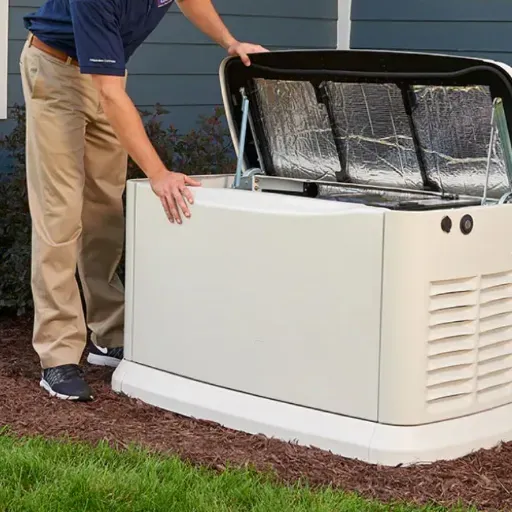
When selecting the right standby generator, focus on the following essential criteria:
Power Requirements
Determine the total wattage your institution uses in the event of a power outage; consider key devices, air conditioning equipment, and other essential utilities to ensure the generator’s power output capabilities are properly matched.
Fuel Type
Identify the source of energy that is the most beneficial, and which basic services would you require within such a setup. Some alternatives are diesel, natural gas and propane, each with some peculiar advantages such as storage possible over longer period (diesel) or endless availability (natural gas).
Automatic Transfer Switch (ATS)
Grasp the importance of having an ATS to proactively facilitate a quick switch over from grid power to generator system operation during power outages without any hitches. This will help minimize future trouble.
Noise Level and Location
Ensure the installation of a generator that complies with the noise pollution regulations in the area where the generator is to be installed, and also find an appropriate position for the generator in relation to habitable areas to minimize interference.
Reliability and Maintenance
Considering the need for regular electrical maintenance, particularly with large installations, it may be worthwhile to opt for products manufactured by reputable companies. This can make it a lot easier to perform maintenance and repair operations whenever necessary.
Assessing Your Power Needs
Before discussing different criteria on the generator selection stage, it is essential to establish the requisite behaviour of the power from any purpose generators. Your first step should be to determine the overall amount of power required to operate the main equipment during the power cut. These can include the operation of various devices, including refrigerators, air heating systems, lighting, and any medical devices. The wattage of the most sensitive equipment can easily be read in the section dedicated to the power section of the manufacturer’s deck, and this is also obvious for the devices from the milking robot drawing. Fix the vocational devices, such as air conditioning and other significantly powered motorized systems, like the sump pit, within the available workload. It is recommended to incorporate extra wattage to avoid brownout effects and continue generator operations under acceptable standards. In cases of industrial setups and repair units, an in-depth evaluation can be conducted by an electrician, considering the specific power consumption requirements, times, and station states.
Choosing the Right Fuel Type
Gasoline
Gasoline is readily available and typically used to power portable generators. It is best known for its high caloric efficiency. Still, it is of lesser quality, risky, and subject to decomposition within minutes rather than seconds on exposure, on a strict basis of long-term storage. Finally, petrol engines can emit more carbon monoxide, which needs proper ventilation during their use.
Diesel
Diesel engine fuel is renowned for its economy and durability in tough environments, particularly for vehicles with heavy loads or commercial usage. It is used in generator sets mainly because these generators consume less fuel per kilowatt-hour produced than gasoline generators, which translates to lower operating costs. However, diesel can be more expensive at the outset, and the operation of the fuel may suffer in very low temperatures unless fuel-altering agents are used.
Propane
Propane offers several advantages, as it is a cleaner option than gasoline due to lower pollution and reduced maintenance costs over the long term. Gas tanks filled with propane can be stored indefinitely as a reserve, making them ideal replacement tanks for generators. However, it cannot store energy as efficiently as other hydrocarbons such as petroleum and kerosene, thus making shorter bursts from tanks of comparable size.
Natural Gas
Many factors drive natural gas-powered generators, internal or external. Internal refers to those used in stationary locations where an outlet is present and works without a battery, while external refers to the portability of a generator (the existence of batteries). They come with accessories such as transformers that allow electrical energy generated using the gas to be used in different appliances. Natural gas piped to the generator setup can be considered an almost perfect fuel in such situations. However, the increased risk of disasters requires an alternative source of energy.
Budget Considerations
When reviewing generators, the financial considerations include the initial costs and subsequent operating expenses. While the initial costs depend on the type, size, brand, and cartage of a generator, and since it’s a lifetime investment, the operational costs may include the cost of fuel, running maintenance costs, other structure modifications that may be required, and this may affect the whole cost in such ownership. Contrary to popular belief, natural gas generators, though expensive at the time of purchase, are advantageous over the long haul owing to the abundance of such a fuel source, cheaper prices of fuel, and less maintenance costs for such generators. On the other hand, diesel generators, while more economical at the onset, may face high fuel costs and more regular maintenance services than the gas generators. When buying generators, owners use a few key indices to assess this imperative, ensuring they do not compromise on quality, security, and never waste a coin unnecessarily.
Comparing Popular Standby Generators Models
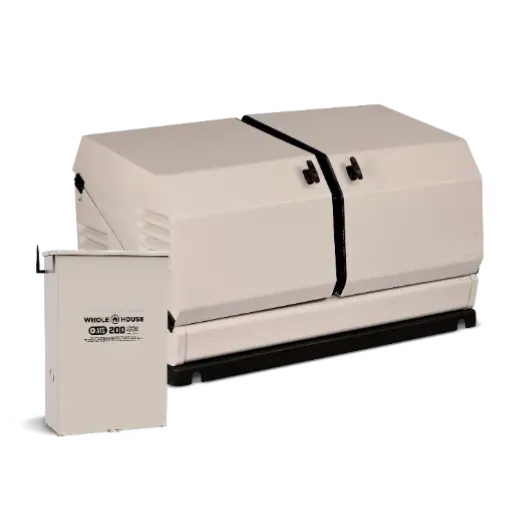
While discussing the best power generators for home or commercial use (standby), one can focus on power, economy (using fuel-efficient techniques), and resilience of the generator. In sympathy with this classification, the proposed Generac Guardian series, with its commendable 22kW quiet power, is particularly interesting for single-family homes that need considerable energy resources. As for the Kohler generators, which include the Kohler 20RESCL among others, they are renowned for their impressive performance and service life. Many clients prefer them due to their automation and enclosures, which are highly resistant to rust. Speaking of consumption, the net technical power that a diesel electric generator offers serves the numerous customers of the Caterpillar C15. Thus, as of today, the best (or most appropriate) recommendations would be to find an energy management solution, taking into account the specifics of the sortie area and the limits of available funding.
Model Features Comparison
| Feature | Kohler 20RESCL | Caterpillar C15 | Generac Guardian 22kW | Cummins RS20A |
|---|---|---|---|---|
| Power Output | 20 kW | Up to 625 kW | 22 kW | 20 kW |
| Engine Type | Kohler CH1000 | Caterpillar C15 Diesel | Generac G-Force 1000 Series | Cummins QSJ999G |
| Fuel Type | Natural Gas/Propane | Diesel | Natural Gas/Propane | Natural Gas/Propane |
| Enclosure Type | Corrosion-resistant aluminum | Weather-resistant steel | Aluminum or Steel | Aluminum |
| Start System | Automatic | Automatic | Automatic | Automatic |
| Noise Level | 64 dB(A) at 7 meters | Varies (industrial-grade) | 67 dB(A) at 7 meters | 65 dB(A) at 7 meters |
| Load Management | Built-in load management | Customizable options | Smart load management | Advanced load management |
| Monitoring Capability | Remote monitoring enabled | Advanced monitoring systems | Wi-Fi and mobile monitoring | Remote access capable |
| Warranty Coverage | 5 years or 2,000 hours | Varies | 5 years, limited | 5 years, limited |
| Application | Residential/light commercial | Large commercial/industrial | Residential/light commercial | Residential/light commercial |
Making an Informed Decision
When deciding whether to opt for a backup power generator, one needs to consider certain factors specific to each particular area: operational effectiveness, reliability, and the ability to adapt to the relevant environment. Capacity requirements for a specific space can be the primary criterion, as they help determine whether a home, commercial, or large-scale installation is necessary. Features such as the possibility to regulate loading (for example, with a smart grid) by controlling durable parts can improve the efficiency and cost appropriateness of the energy consumed over multiple periods. In case of an emergency, the most convenient means is to constantly monitor equipment and facilities, where he/she can receive reports and initiate repairs on a non-performing system to avoid delays.
It is imperative to consider warranty and product support services as they have a direct impact on the long-term value. Moreover, a warranty provides a guarantee of the product’s quality while also offering a cost shield in case the product is defective. It is also crucial to ensure that the machine to be purchased, including factors such as fuel, is compatible with noise levels and the installation location. With the information provided here, a thorough evaluation can lead to the selection of a generator or other power backup solutions whose efficiency is precisely on the customer’s requirement level.
Reference Sources
1. Identification of Hazards and Risk Assessment for a 40kVA Diesel Powered Lighting Set
- Key Findings:
- The study identifies occupational hazards and risks associated with the installation, operation, and maintenance of diesel-powered generators.
- Five major tasks were analyzed, revealing varying degrees of hazards in each phase.
2. Elements of Generators Selection, Sizing, and Maintenance in Nigerian Industries
- Key Findings:
- Proper generator sizing and maintenance are critical for industrial productivity and cost efficiency.
- The study emphasizes the importance of selecting the right generator based on load demands, fuel type, and operational requirements.
Frequently Asked Questions (FAQs)
Q: What is the process to install a standby generator?
A: Typically, the course of the standby generator installation involves several main steps. Prior to that, there had to be a location for the generator and then it had to be ensured the generator complies with the local building codes, if any. Following this, the pad was prepared to set up the generator, which was essential for both the steadiness of the appliance and drainage. Once the specific area is prepped, an electrician will have to attach a transfer switch to the generator so that it can be linked to the power grid of your house. Using the generator in standby mode, a portion of its capabilities can be activated, allowing the generator system to generate power in the event of an outage.
Q: What are the installation costs for a home standby generator?
A: The price to mount a backup generator can be cheap or expensive, depending on several things, such as the specs of the generator and how a particular installation can be done. In the average case, it may range between 3,000 and 7,000 US dollars; on the other hand, this price might be higher when an electrician has to be hired to put other components, such as a manual changeover switch, into position. In addition, running a new gas conduit, lancing the wall, or any other enhancement to the electrical system could also add up to the installation cost. Before starting the entire process, it is wise to visit a major retailer where a more precise budget can be used, ensuring compliance with local regulations.
Q: Do I need a transfer switch to install my standby generator?
A: Having a transfer switch is very important when it comes to integrating your generator and your home’s electricity system safely. It helps to make sure that the power produced by the generator can be used in the home, without causing any injury to workers on the power line in case it backfeeds the utility lines. If the user of the home intends to use the generator on a regular outage, one may consider the purchase of a manual transfer switch. However, for those who prefer to automatically use the connected standby generator once power is restored, the automatic transfer switch offers a better option. It is essential to engage the services of an electrician to fix this part of the system due to the need to comply with prevailing laws and regulations.
Q: How do I choose the right location to install the generator?
A: Before positioning your generator, make sure you take into account several factors: how easily it can be reached, how close it is to your gas meter (if you prefer to use it), and the rules of the local construction standards. The place you choose should provide enough air circulation, and it should be at least a few feet from windows and doors so that the escaping exhaust gases do not reach the inside of the home. In addition, ensure that the generator is placed on a flat and solid surface to distribute its load, such as a concrete slab. Finally, it is always a good idea to approach a custom dealer or installation agent who can provide the best possible advice on placing and following the generator in compliance with the region’s governing body.
Q: Can I install a standby generator as a DIY project?
A: Although it is possible to attempt certain aspects in standby generator installation on a do-it-yourself basis, it is recommended that you hire specialized personnel for specific jobs. The installation of a generator involves dealing with electrical systems and, in some cases, even gas lines, meaning that it can be a matter of risk if done incorrectly. Hiring an electrician to install a transfer switch, and to verify the insets and connections are correctly set and legal is essential. Moreover, local building codes may require the employment of professionals for installation, as stipulated. If some home improvement projects are within your skills, you might consider doing some of the tasks, such as cleaning up the area and assembling pre-designed structures.
Important Note
This guide provides a comprehensive overview of standby generator installation from an educational perspective. Actual installation work should always be undertaken by a further licensed party compliant with the local building codes and regulations. Safety must be prioritized above all else when working with electrical systems and fuel lines.



